This morning, we were able to assemble with members from the Stake to work on the restoration of Brigham City. I was more than excited to get in on this because I love anything historical. Restoring a pioneer community? Sign me up!

While I was cleaning out excess mud from between the sandstone walls we had made, I had a chance to talk to President Gene Hancock about his interest in the Brigham City Restoration. He said it started about 20 years ago. They’d tried to get the project off the ground by funding it through bake sales and the like. It didn’t get them far, and soon President Hancock got discouraged. A few years ago, the project resurfaced on account of his acquiring the lease to the land from the city (water right included -huzzah!), and things are really moving forward. Want to meet him?
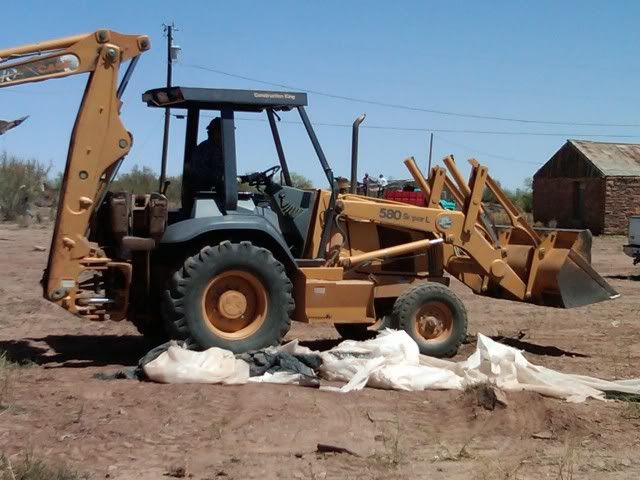
He’s a busy man. And though I could have snapped a picture while we were mucking mud out of the walls, I didn’t exactly feel like getting mud all over my cell phone. I also just wanted to finish mucking. I gotta say: it’s a little addicting.
About a year ago, I took my little flock of Beehives to a museum in downtown Winslow, AZ. I snapped a few pictures of the inside and then went home and googled around. Whilst googling, I stumbled onto THIS SITE about the Brigham City Restoration.
If you’ll click on that link, you can read more about the project and see a few more (and better) pictures. Here’s a small excerpt taken from the website about the history:
“In January, 1876, Brigham Young summoned to Salt Lake City four brethren to lead missionary parties into the Little Colorado River area which had been explored by Mormon scout Jacob Hamblin during the the 1850’s and 1860’s where he frequently visited the Hopi and Navajo Indians as a Church missionary. Brigham Young instructed his four captains to assemble a new generation of pioneers to settle in Arizona Territory (A.T.). This group of missionaries, 300 souls divided into four companies, was perhaps the last of the self-sufficient American pioneers to seek new homes in an unsettled territory of this nation.
These hardy missionaries left Utah for the Sunset Crossing of the Little Colorado River to plant their faith in a new land. Jessie O. Ballinger and his initial company of 35 men, some with their families, together with the other three companies captained by Lot Smith, George Lake, and William Allen, set out in February of 1876 and arrived at their new home sites the following spring. This became the first LDS Church Stake in Arizona and was called the “Little Colorado Stake” which was the 21st Stake of the Church.
Although Brigham City (Ballinger’s Camp) is the principal subject of this restoration, the stories of Obed (Lake’s Camp), Sunset (Smith’s Camp), and Joseph City (Allen’s Camp) are mentioned because the histories of the four settlements are inseparable.
Brigham City, a fortified Mormon settlement on the Little Colorado River near the City of Winslow, Navajo County, Arizona was established iln 1876 as a United Order community and abandoned by the Church in 1881. In June of 1878, the site was placed on the National Register of Historic Places. The site is culturally, historically, and architecturally significant and has great potential for interpretation an public visitation.”
There was a crew of people building:
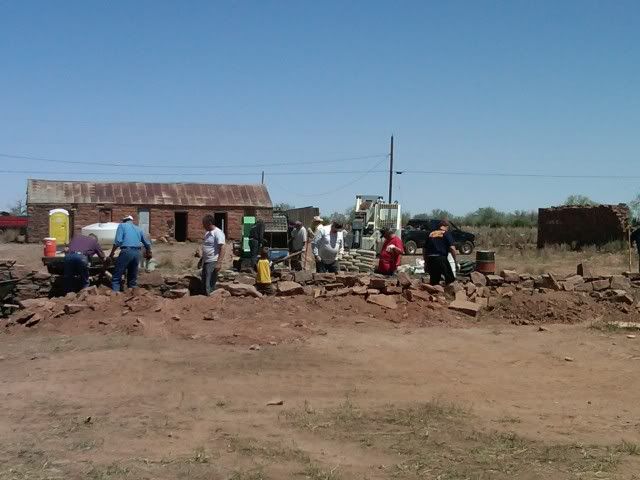
And a crew of people building:

And a crew of people building:
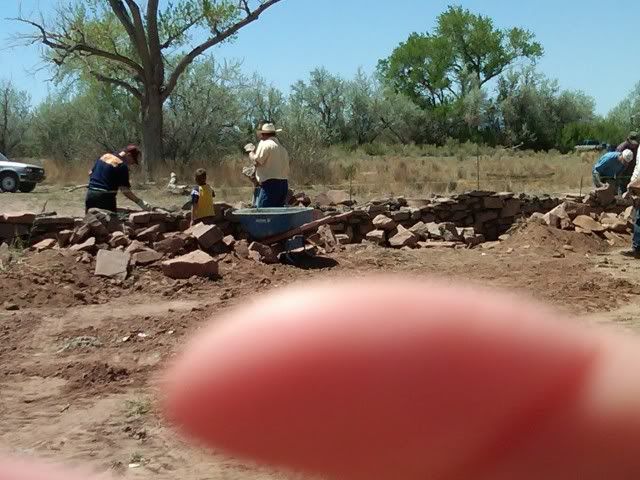
(my son was trying to take my phone away from me while I was taking pictures. That’s why these pictures aren’t the best. As my son would say, “I’m leally sowwy.”)
There was also a crew of people burning, but I forgot to take a picture of them. Again, leally sowwy.
So do these ones:
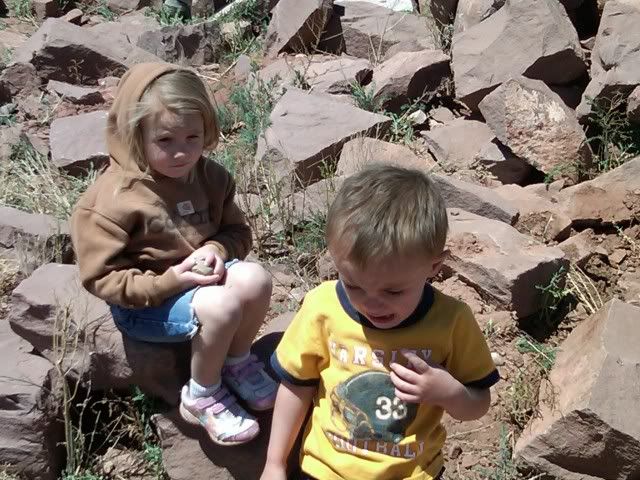
My son spent about 30 minutes crying because I wouldn’t hold him. In my defense, I DID hold him. But after awhile, I just couldn’t anymore. When he wouldn’t stop crying, we finally put him in the beautiful lookout point of the fort and let him cry away.
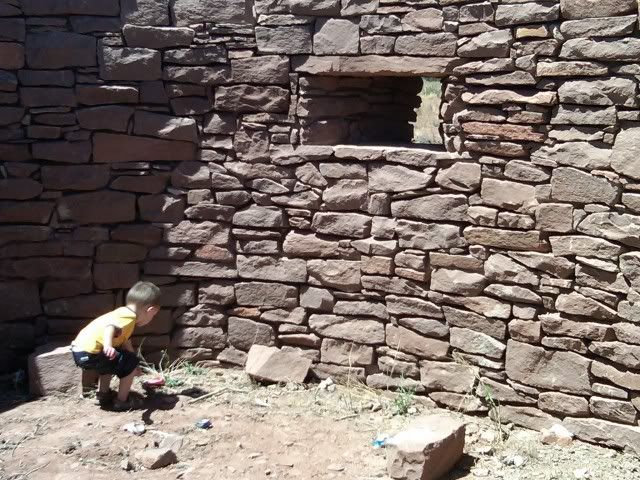
That part of the fort was built 20 years ago -it was meticulously done. There was perfectly crafted small windows that were replicas of what used to be there 130 years ago.
Here’s a wall that the pioneer built over 130 years ago. It’s still standing! Can you believe that? They made it using sandstone and mud. As in: mud from the ground they walked on.
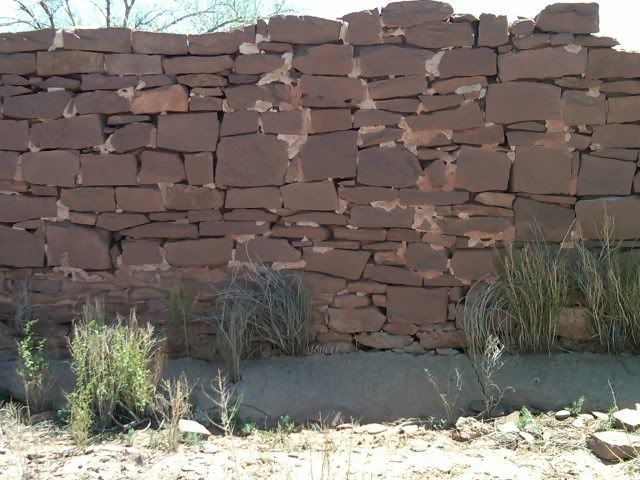
This is all amazing unto me.
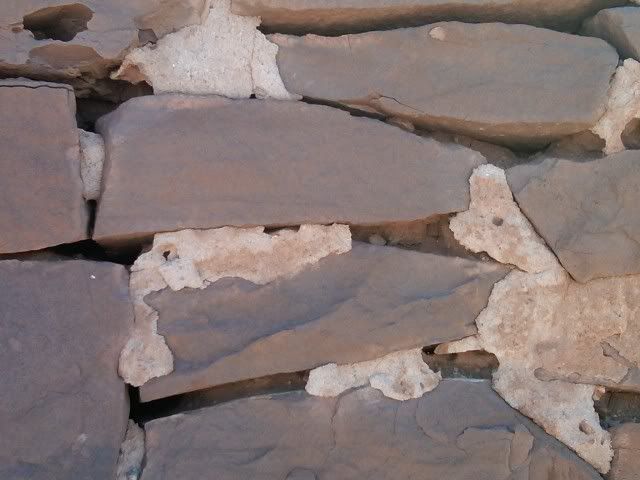
Their lives were so completely different from ours.
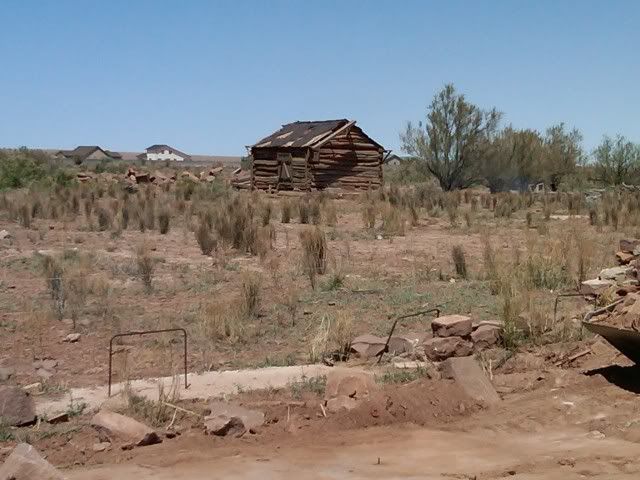
It’s surreal to walk where they walked. It’s even more surreal to watch big tractors haul rocks, dirt, and logs around. I bet the pioneers would have killed their fattest calf for a tractor.
Their three fattest calves, actually.

That port-a-john has nothing to do with history. Disregard.
They sent us on our way after lunch:
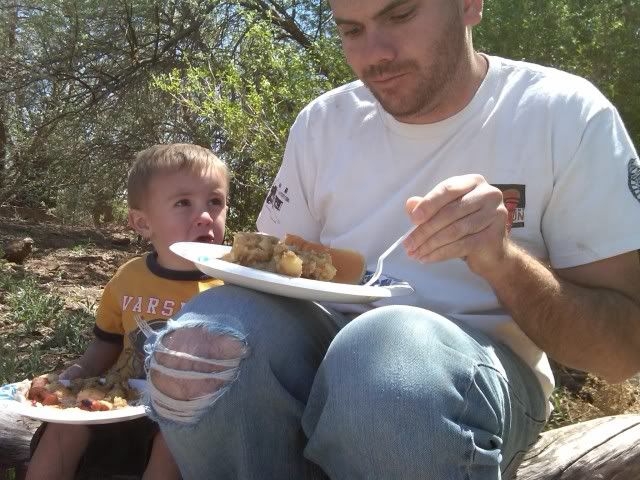
We feasted on hot dogs and Robert Pugh’s Potatoes. Anyone who understands the beauty of Robert Pugh’s Potatoes also needs to know that on JULY 23rd, we’re going at this again. And even if you’re only in it for the potatoes, it will be well worth it.
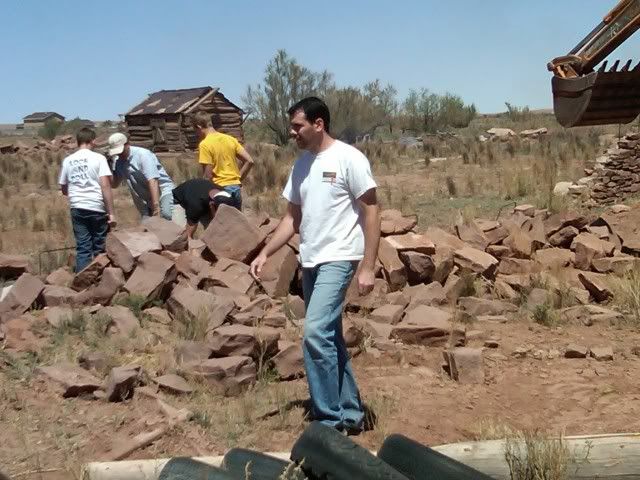
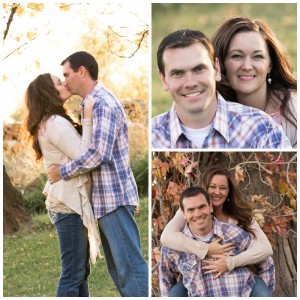
I have relatives that were called to settle Brigham City, AZ. I would love to take my kids up there. We are down in the Mesa area. How much more restoration is going to happen?
Thanks for sharing your story and photos of the work at Brigham City! My husband and I spent many hours at the fort back in the 90’s. We were a part of the team that did excavation work and later we helped the brick layer that did the bastion. We were mostly making the “mud” for the walls and helping carry rocks to him, but a few of the rocks in the walls were placed by us! My ancestors helped build and lived at Brigham City, and it was so special to me to be able to be a part of the work there.